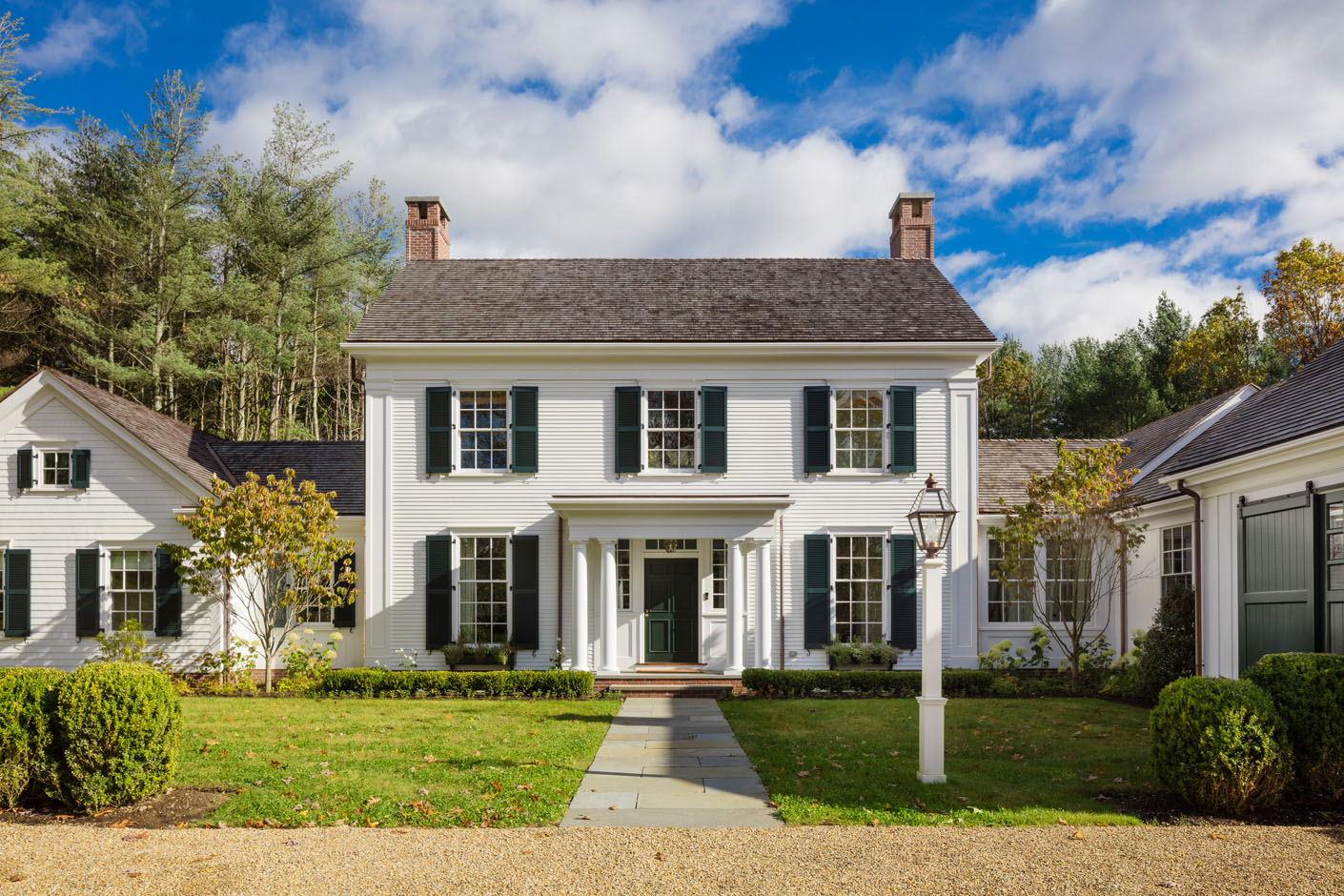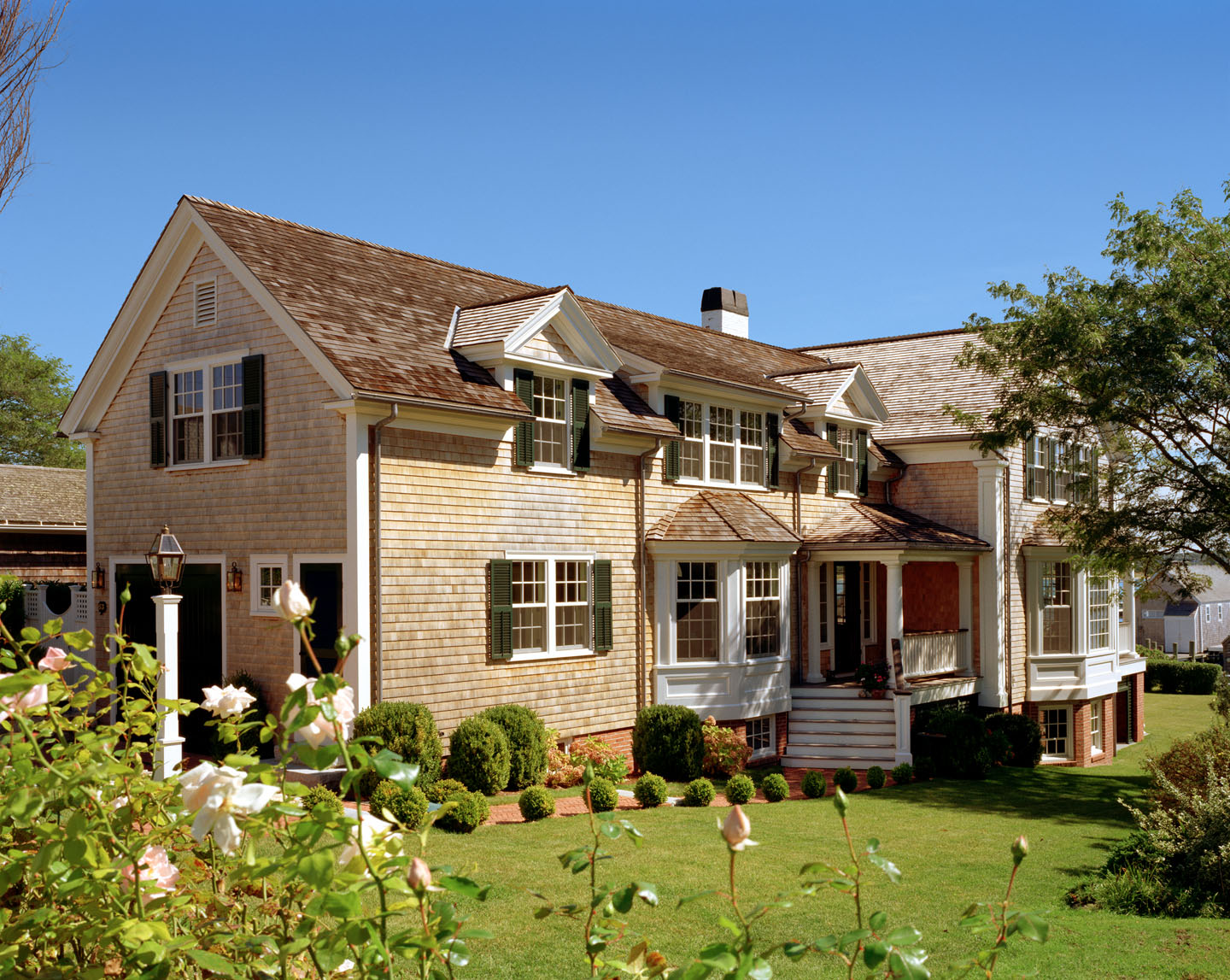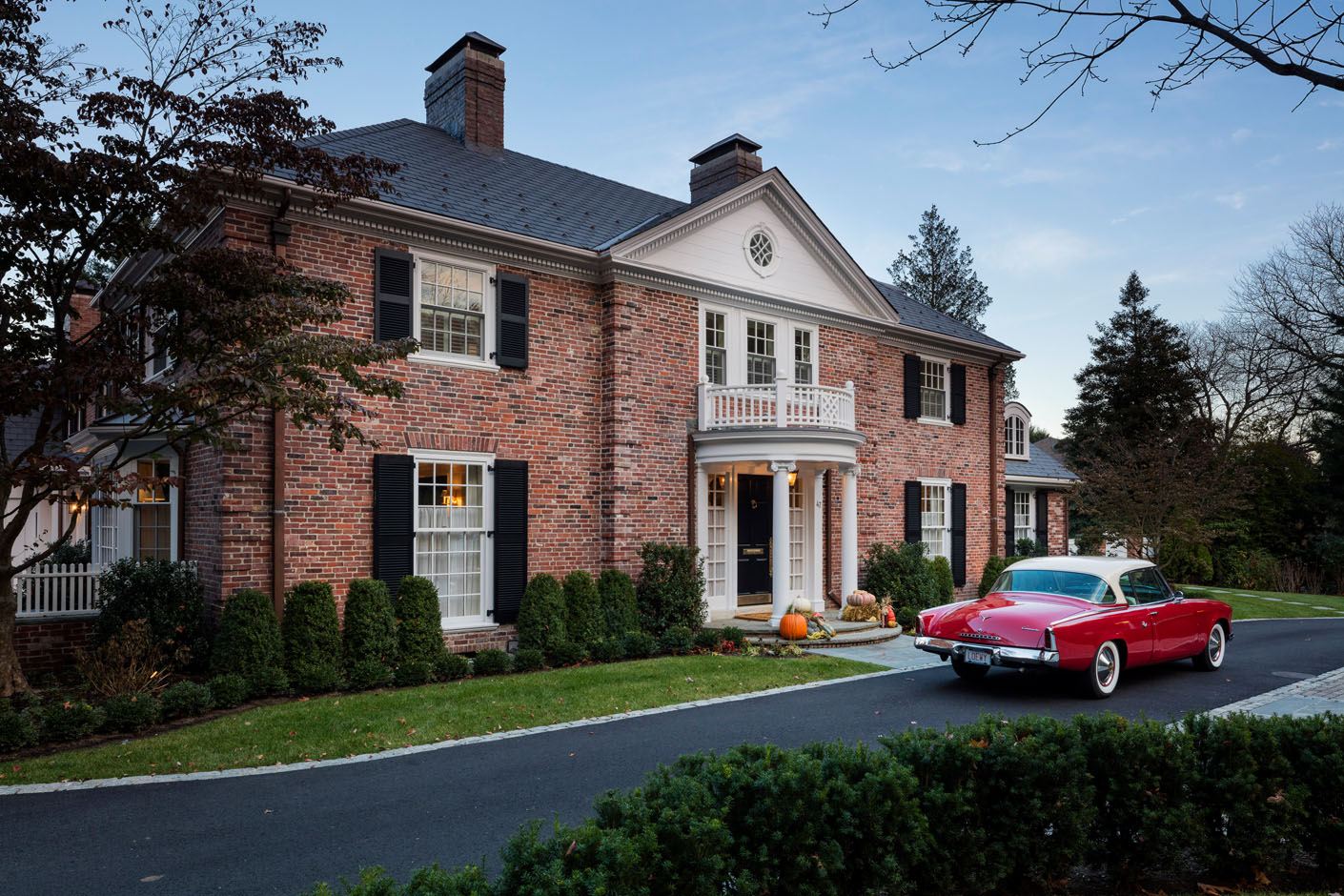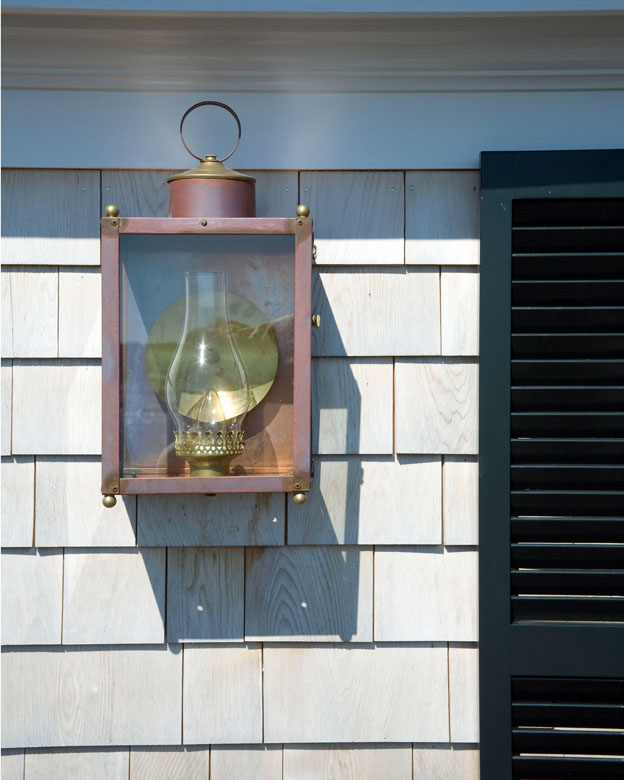For more than four decades, Patrick Ahearn Architect has specialized in creating classic American architecture for contemporary living. To create a sense of the past in new construction homes, key exterior elements are blended to suggest a home that’s rich with history. Below, our essential kit of parts used to “backdate” a house.
Whether restoring and renovating landmarked homes or crafting new residences, our goal is for a property to evoke a sense of history, especially from the curb. In renovations, we respect the past and look to restore and highlight architectural elements unique to the period in which the home was originally constructed. In new builds, however, we must create that sense of history using an amalgamation of elements that together indicate a much older home. From the foundation to the roofline there are key details that make a significant difference. A true case of the whole being greater than the sum of its parts, when all of these elements are considered passersby will wonder whether the home has stood forever.

At the base: the foundation
A home’s foundation is the first element that can backdate a house. A critical piece of the exterior mix, most foundations are expressed at a minimum of 8 inches, but many are even more exposed. Historically, foundations were comprised of fieldstone or brick. Concrete as a material was not available long ago, and thus when a foundation is left as concrete, it’s a dead giveaway that the home is new. We look to veneer a foundation with brick or stone to suggest the property has stood longer than its actual age. Once the podium is expressed architecturally with brick or stone, the subconscious registers the residence as one with history and quality.

A window into the past
On most of our projects, we specify Pella Architect Series windows. With muttons featuring extra step profiling like single glass windows of yore, these windows help to elicit the feel of a historic structure. Further, when assessing basement windows from the exterior, we identify the header as an opportunity for historical cues. On a brick home, we may use a soldier course of brick along a basement window header or at times an old stone granite lintel. This simple change in direction in the brick or change of material in the header makes a house read as far more storied than new construction.
As we rise from the lower level to the front façade and front-facing windows, information is layered to tell a historic tale. Features like shutters with pins and holdbacks that are not merely screwed into the siding are part of our vernacular. Similarly, front-facing window boxes have a big impact on a home’s timeless feel.

Moving along the facade: the front entryway
A home’s sense of arrival is of utmost importance for backdating. When appropriate, we like to use reclaimed granite as a front step or series of steps. By using old granite as opposed to concrete or bluestone, the home will register with a greater sense of history.
Beyond the steps, the front door itself is an incredible opportunity to make a home read as timeless. By working with a 3’6” wide extra thick door with period-appropriate hardware, the home welcomes with an entrance that appears to be steeped in history. Architectural pieces such as the entablature around the front door or a portico can also be used to help a home seem older than its actual years.

In addition, properly scaled artisanal copper coach lights are some of the most critical details that can give even a new home the patina of age. Investing a little extra to procure quality lights like the ones from Lamplighter Corner or Patti Bros can make an enormous impact on a home’s narrative. Set astride a front door, copper coach lights warm an entry, highlight an historic-seeming front entrance, and welcome visitors with the sense of a proud longstanding home.

If this discussion of backdating has you thinking about your own home, contact us to learn how we might create a timeless residence for you and your family. In the interim, we invite you to find meaningful inspiration in our portfolio.